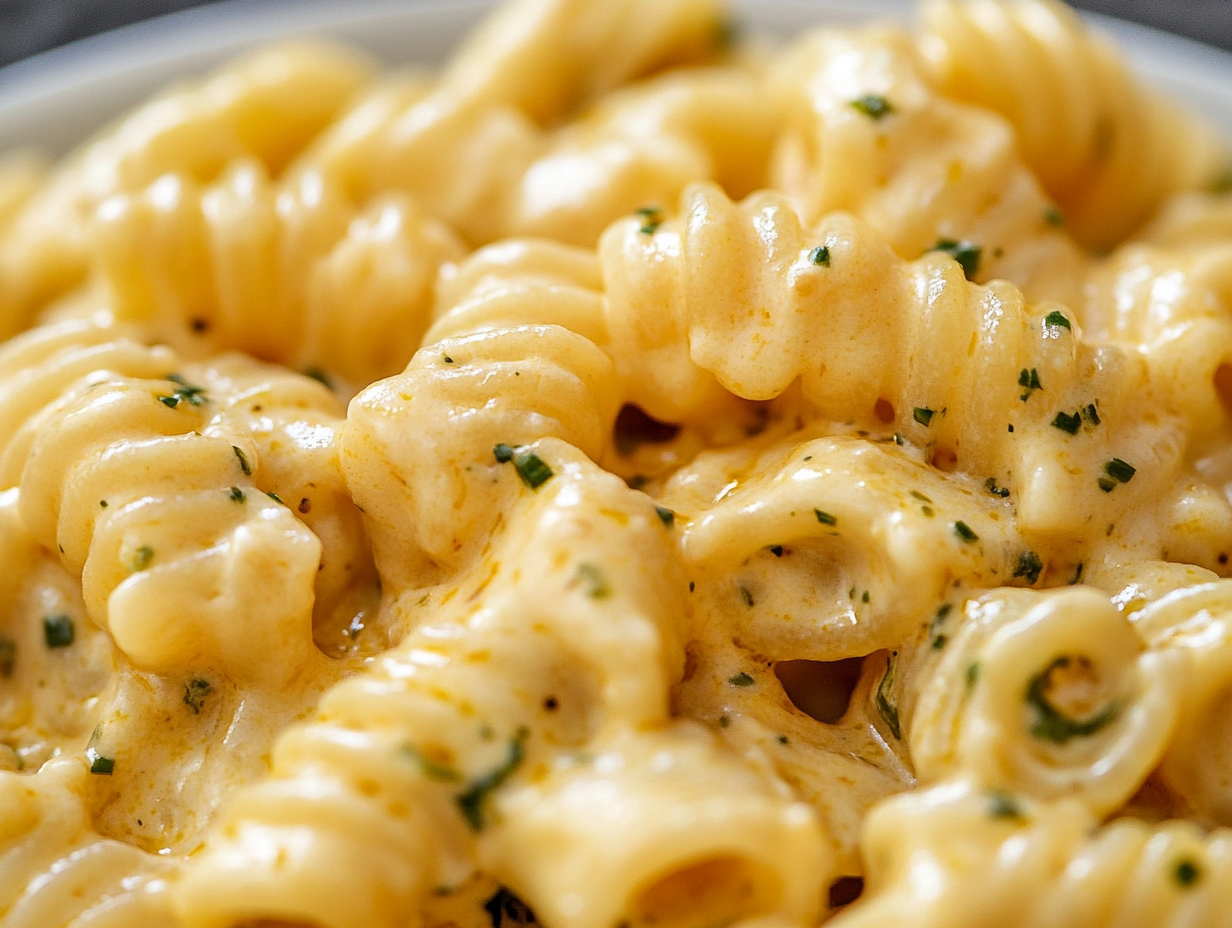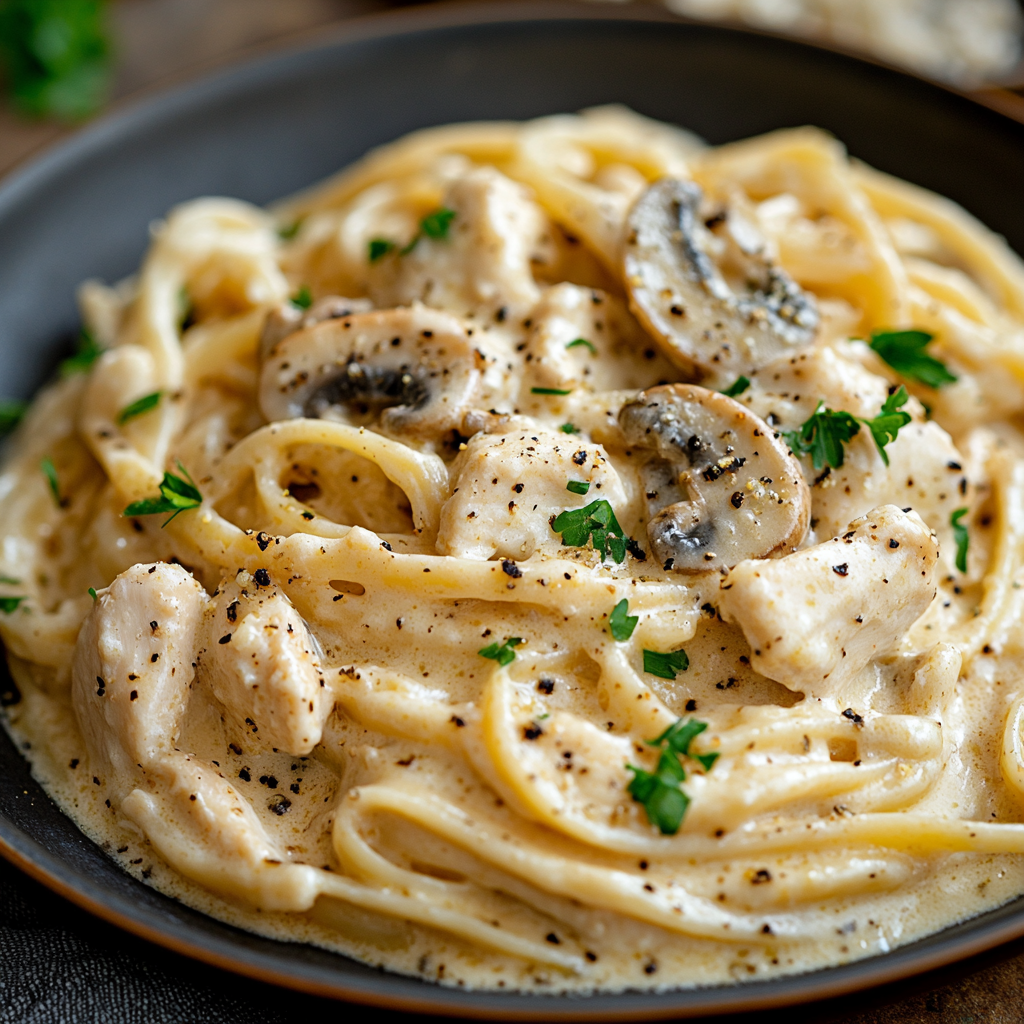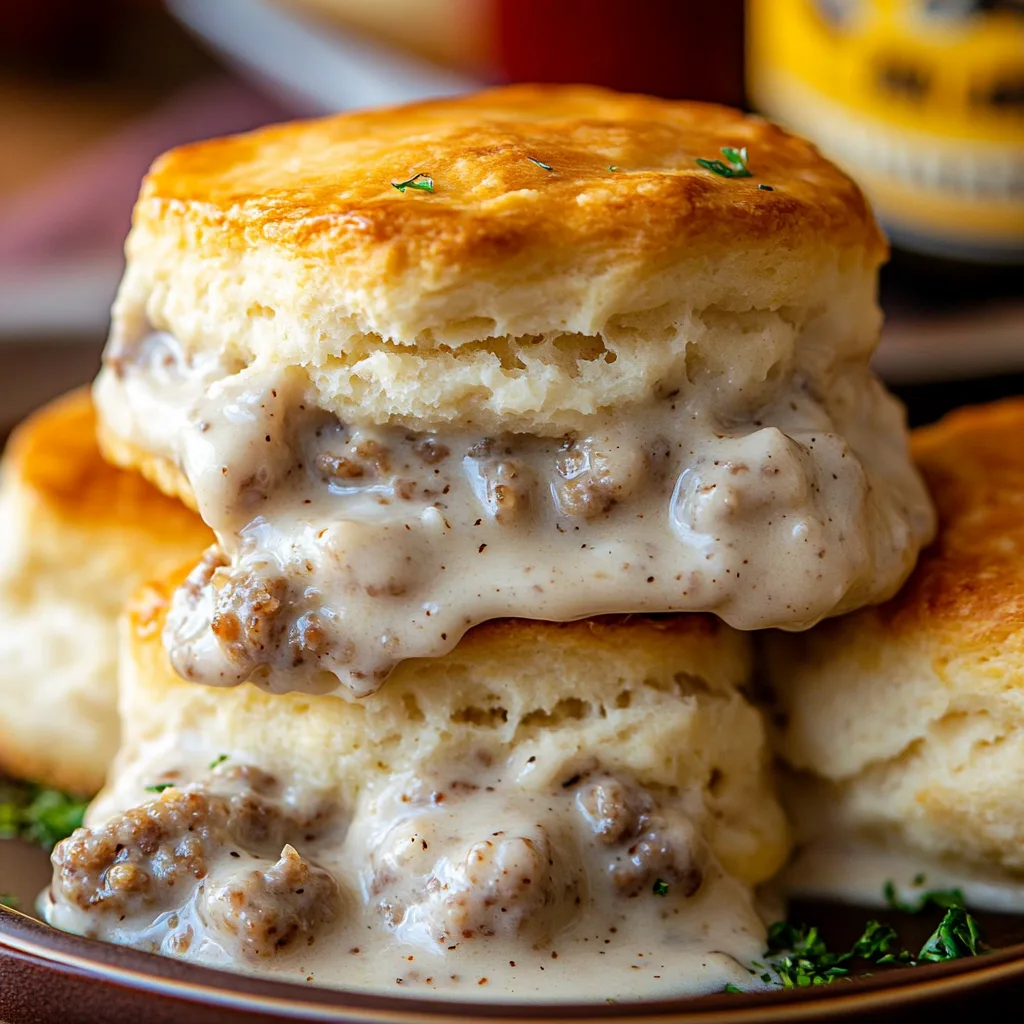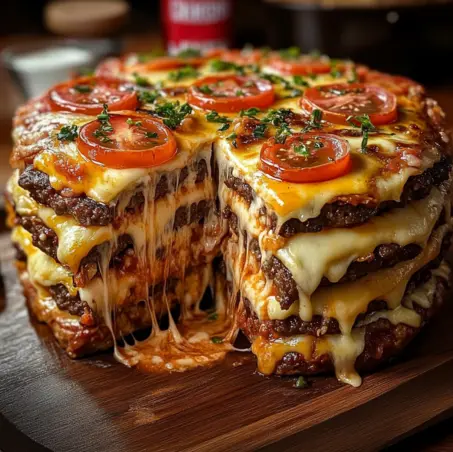Radiatore pasta, named after the Italian word for “radiator,” is a short, ruffled pasta shape that closely resembles the coils of an old-fashioned radiator. Invented in the early 20th century by Italian pasta makers inspired by industrial design, radiatore was developed to provide a unique texture and an ideal surface for holding onto thick, flavorful sauces. Unlike smoother pasta types, its ridged, spiraled shape maximizes the sauce’s ability to cling to each noodle, creating a rich, satisfying mouthful in every bite.
The beauty of radiatore lies not only in its distinctive appearance but also in its versatility in the kitchen. This pasta works wonderfully in a variety of recipes, from hearty casseroles and baked dishes to quick skillet meals. It’s especially popular with cream or tomato-based sauces, as its deep grooves allow it to soak up every bit of flavor, creating a harmonious balance between the sauce and the pasta itself.
For home cooks and professional chefs alike, radiatore’s shape provides an exciting alternative to more common types of pasta, like penne or rotini, by bringing a unique textural element to each dish. Its ability to pair well with creamy sauces makes it an excellent choice for this recipe, creating a flavorful, satisfying pasta experience.
The ingredients in this Radiatore Pasta in Creamy Sauce recipe each play a distinct role, contributing to a balanced, flavorful, and satisfying dish.
- Radiatore Pasta: Known for its unique, ridged, radiator-like shape, radiatore pasta is excellent for capturing sauce. Its texture ensures that every bite is packed with the rich, creamy sauce, making it a star in this recipe.
- Olive Oil: Used to sauté the onions, olive oil brings a subtle, fruity flavor and helps build the base for the sauce, setting up a flavorful foundation.
- Onion: When diced and sautéed, the onion releases its natural sugars, adding a mild sweetness and depth that balances out the creaminess of the sauce and complements the tomato paste.
- Garlic: Minced garlic infuses the sauce with a warm, aromatic undertone. Its distinctive flavor enhances the savory aspects of the dish and pairs well with the other Italian-inspired ingredients.
- Tomato Paste: Tomato paste contributes a concentrated, slightly tangy tomato flavor, along with a rich red color. It also introduces a slight acidity, which balances the cream and adds dimension to the sauce.
- Dried Basil: Adding a touch of herbal, slightly sweet flavor, dried basil enhances the Italian profile of the dish, complementing the creamy, savory elements.
- Salt and Red Pepper Flakes: Salt enhances the overall flavor, while red pepper flakes add a subtle kick of heat, bringing a hint of spice to balance the creaminess.
- Heavy Cream: Essential for the sauce’s creamy texture, heavy cream provides a rich, luxurious base that melds all the ingredients together, creating a smooth, velvety sauce.
- Parmesan Cheese: Grated Parmesan adds savory, umami richness. It melts into the sauce, thickening it slightly and adding a nutty, salty depth that perfectly rounds out the dish.
Step-by-Step Recipe Instructions
This Radiatore Pasta in Creamy Sauce recipe involves several key steps to ensure a flavorful, perfectly textured pasta dish. Follow these detailed instructions, with tips to help you achieve the best results.
- Cook the Pasta:
- Begin by bringing a large pot of salted water to a boil. Salt is essential as it infuses the pasta with flavor from the start. Use about 1-2 tablespoons of salt per gallon of water.
- Add the radiatore pasta, cooking it according to package directions, typically for about 10-11 minutes. To achieve the perfect texture, aim for al dente – the pasta should be cooked through but still firm to the bite.
- Just before draining, reserve about ½ cup of pasta water. This starchy water can help adjust the sauce consistency later if needed. Drain the pasta and set it aside.
- Sauté the Onion:
- In a large skillet, heat 2 tablespoons of olive oil over medium heat. Once the oil is shimmering, add the diced onion.
- Cook the onion for about 5 minutes, stirring occasionally, until it becomes soft and translucent. This slow cooking process allows the onion’s natural sweetness to develop, adding depth to the sauce. Avoid browning the onion; a soft, translucent texture is ideal for blending smoothly with the other ingredients.
- Add Tomato Paste and Seasonings:
- Reduce the heat to low and add 2½ tablespoons of tomato paste to the skillet. Stir well, incorporating it with the onions, until the mixture is a vibrant red.
- Add the minced garlic, ½ teaspoon of salt, 1 teaspoon of dried basil, and ⅓ teaspoon of red pepper flakes. Stir to mix all the flavors, allowing them to meld together for 1-2 minutes.
- This short cooking time releases the flavors of the seasonings without overpowering the dish, while the tomato paste gains a deeper, slightly caramelized taste that balances the acidity and sweetness.
- Add Cream and Parmesan:
- Slowly pour 1 cup of heavy cream into the skillet, stirring to combine with the tomato and seasoning mixture. Bring the sauce to a gentle simmer over low heat.
- Gradually add ¾ cup of grated Parmesan cheese, stirring continuously to ensure the cheese melts smoothly into the sauce. Stirring constantly helps the cream and cheese blend seamlessly, preventing any curdling or separation and resulting in a rich, velvety sauce.
- Let the sauce simmer for a minute or two, allowing the flavors to develop fully.
- Combine Pasta and Sauce:
- Add the cooked radiatore pasta to the skillet, tossing it gently to coat every piece in the creamy sauce. The radiatore’s ridges will help the sauce cling to each piece, creating a harmonious blend of pasta and sauce.
- If the sauce seems too thick, use the reserved pasta water a little at a time to loosen it, adjusting to your desired consistency. This starchy water helps the sauce adhere to the pasta better, creating a smooth, well-bound dish.
- Serve:
- Once the pasta is thoroughly coated, serve it hot. Garnish with extra Parmesan cheese if desired, and enjoy the perfectly balanced flavors and textures of your Radiatore Pasta in Creamy Sauce.
Creating the best Radiatore Pasta in Creamy Sauce relies on a few key tips to ensure each ingredient shines and the texture is spot-on.
- Choose Quality Ingredients: High-quality ingredients make a significant difference in flavor. Look for premium radiatore pasta, as the texture and ridges of well-made pasta will hold onto the sauce more effectively. Freshly grated Parmesan has a richer, sharper taste than pre-grated versions and will melt more smoothly into the sauce. Likewise, using good-quality olive oil and heavy cream enhances the overall depth and creaminess of the dish.
- Cook Pasta to Al Dente: Cooking radiatore al dente (firm to the bite) is essential for achieving the ideal texture, especially in a creamy sauce. Overcooked pasta can become mushy and won’t hold the sauce as well. Check the pasta a minute or two before the package-suggested cooking time to ensure it’s just right.
- Reserve Pasta Water: Before draining the pasta, remember to save about ½ cup of the pasta water. This starchy water is a secret ingredient for perfect sauce consistency; it can be added a little at a time to loosen the sauce if it becomes too thick. The starch in the pasta water also helps the sauce cling to the pasta, ensuring each bite is evenly coated and flavorful
This Radiatore Pasta in Creamy Sauce recipe is versatile and can easily be adapted to suit different tastes and dietary needs. Here are some delicious variations and substitutions:
- Adding Protein:
- Cooked Chicken: Grilled or roasted chicken pairs beautifully with the creamy sauce, adding a lean protein and mild flavor. Slice or shred the chicken, then stir it in with the pasta and sauce to warm through.
- Shrimp: Sauté shrimp separately in olive oil with a bit of salt and pepper until pink and cooked through. Add the shrimp to the pasta just before serving, providing a seafood twist that complements the cream sauce.
- Pancetta: For a rich, savory flavor, add diced pancetta or bacon. Sauté it until crispy, then remove from the skillet before adding the onion. Incorporate the cooked pancetta into the final dish, adding a smoky, salty bite to the creamy pasta.
- Vegetarian Options:
- Mushrooms: Sauté sliced mushrooms in olive oil until golden brown before adding the onion. Mushrooms add an earthy, savory depth that pairs wonderfully with cream and Parmesan.
- Spinach: Stir fresh spinach into the sauce at the end of cooking. It will wilt quickly, adding color and a hint of bitterness that balances the richness of the sauce.
- Roasted Vegetables: Roasted bell peppers, zucchini, or cherry tomatoes bring a sweet, caramelized note to the dish. Add them just before serving for a heartier, veggie-packed option.
To elevate your Radiatore Pasta in Creamy Sauce, consider these serving suggestions and pairings that add visual appeal and enhance the flavors:
- Garnishes:
- A sprinkle of freshly chopped parsley over each serving adds a pop of color and a mild herbal flavor that balances the creaminess.
- For extra richness, grate a bit more Parmesan cheese on top just before serving. This adds a savory, salty touch and a lovely presentation.
- A dash of red pepper flakes or freshly ground black pepper adds a hint of spice and visual interest to each plate.
- Sides:
- Garlic Bread: Serve warm, crusty garlic bread on the side to soak up any extra sauce. The crispy texture and garlicky flavor pair perfectly with the creamy pasta.
- Side Salad: A light, refreshing salad brings balance to this rich dish. Try a simple arugula salad with lemon vinaigrette, or a Caesar salad with crisp romaine, Parmesan, and a tangy dressing to contrast the creaminess of the pasta.
Frequently Asked Questions
1. What is the origin of radiatore pasta?
Radiatore pasta, inspired by the design of radiators, is a relatively modern creation compared to many traditional Italian pasta shapes. It was likely developed in the early to mid-20th century by Italian pasta makers who wanted a shape that would hold sauces exceptionally well. Its deep ridges and compact structure make it ideal for capturing thicker sauces, such as creamy or meat-based ones, making it a unique addition to any pasta dish.
2. Can I make this recipe without cream?
Yes, you can make a version of this recipe without cream. Substitute the heavy cream with whole milk for a lighter sauce, though it may be less rich and thick. For a dairy-free alternative, you can use coconut milk or almond milk; just keep in mind that these options may alter the flavor. To thicken the sauce without cream, consider adding a touch of butter or a slurry made from flour and milk.
3. What if I don’t have tomato paste?
If you don’t have tomato paste, you can substitute it with a small amount of canned tomato sauce or crushed tomatoes. Use slightly more than the recipe calls for and let it simmer a bit longer to concentrate the flavor. Alternatively, ketchup or tomato purée can work in a pinch, although they may add a bit of sweetness, which you can balance by adding a pinch of salt or an extra dash of dried basil.
4. Why is vodka used in creamy pasta sauces?
Vodka is a popular addition to creamy pasta sauces because it enhances the flavors of the tomatoes and cream. When vodka cooks down, it brings out subtle flavors in the tomato paste, making the sauce more complex without adding any overpowering flavor of its own. The alcohol in vodka also helps emulsify the cream and tomato, creating a smoother, well-blended sauce. If you prefer not to use alcohol, you can substitute it with chicken broth or white wine, which will add a different but pleasant flavor.
5. Can I use a different pasta shape?
Yes, you can use other pasta shapes if you don’t have radiatore. Short pasta varieties with ridges or grooves, like penne, rigatoni, or fusilli, work well, as they also hold onto the sauce effectively. However, radiatore is particularly well-suited to thick, creamy sauces because of its unique design. Longer pasta like spaghetti or linguine may not capture the sauce as effectively, so stick with shorter shapes for the best results.
In conclusion, this Radiatore Pasta in Creamy Sauce recipe is a comforting, flavorful dish that’s simple to make yet rich in taste. The unique shape of radiatore pasta makes it perfect for holding onto the creamy sauce, ensuring every bite is bursting with flavor. With the flexibility to add proteins, vegetables, or alternative seasonings, this dish can easily be customized to suit your preferences. Whether you’re serving it for a cozy family dinner or a special occasion, this recipe is sure to impress. Give it a try, and enjoy the deliciousness of homemade pasta perfection!
Print
Radiatore Pasta in Creamy Sauce
- Author: Christophe
Description
This Radiatore Pasta in Creamy Tomato Parmesan Sauce is a cozy, satisfying dish perfect for a weeknight meal or a special gathering. The ridged radiatore pasta is ideal for holding onto the luscious, velvety sauce made with rich cream, tomato paste, and savory Parmesan. Subtle notes of garlic, basil, and a touch of heat from red pepper flakes balance out the creamy sauce, making each bite flavorful and comforting.
Ingredients
- 10–12 oz radiatore pasta
- 2 tbsp olive oil
- ½ medium onion, diced
- 2 large garlic cloves, minced
- 2 ½ tbsp tomato paste
- 1 tsp dried basil
- ½ tsp salt, or to taste
- ⅓ tsp red pepper flakes, or to taste
- 1 cup heavy cream
- ¾ cup grated Parmesan cheese
Instructions
1️⃣ Cook the Pasta: Bring a large pot of salted water to a boil. Add the radiatore pasta and cook according to the package directions (typically 10-11 minutes). Drain and set aside, reserving about ½ cup of the pasta water.
2️⃣ Sauté the Onion: In a large skillet, heat the olive oil over medium heat. Add the diced onion and cook for about 5 minutes, stirring occasionally, until the onion is soft and translucent.
3️⃣ Add Tomato Paste and Seasonings: Reduce heat to low. Add the tomato paste, minced garlic, salt, dried basil, and red pepper flakes. Stir well and cook for 1-2 minutes to bring out the flavors.
4️⃣ Add Cream and Parmesan: Pour in the heavy cream, stirring to combine. Bring the sauce to a gentle simmer, then add the grated Parmesan, stirring until the cheese is fully melted and the sauce is smooth.
5️⃣ Combine Pasta and Sauce: Add the cooked radiatore pasta to the skillet, tossing to coat each piece in the creamy sauce. If the sauce is too thick, add a little reserved pasta water to reach your desired consistency.
6️⃣ Serve: Serve the pasta hot, garnished with extra Parmesan if desired. Enjoy!
Notes
- Serving Size: Makes about 4 servings
- Calories: Approximately 440 kcal per serving
- Optional Add-Ins: For additional flavor, toss in fresh basil, spinach, or sun-dried tomatoes.
- Storage: Store leftovers in an airtight container in the refrigerator for up to 3 days.












